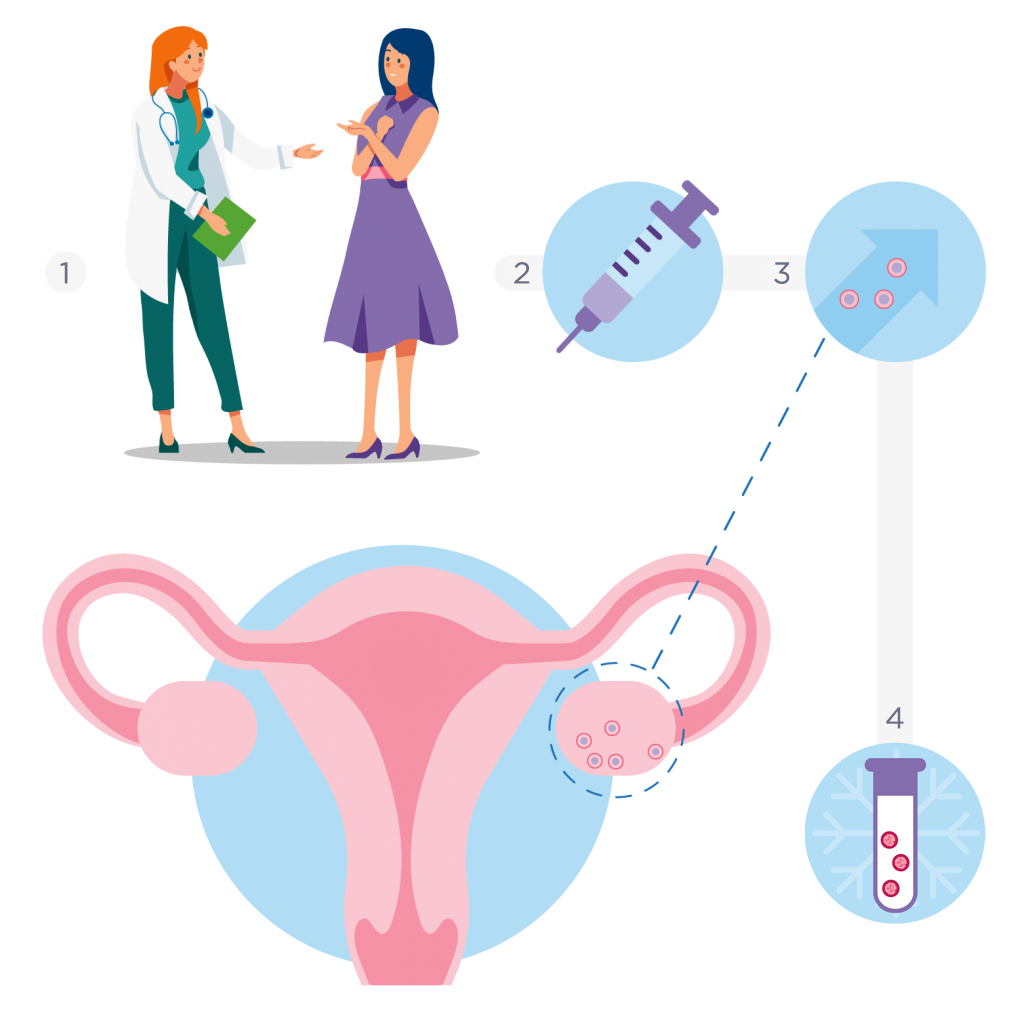Fertility Preservation
Overview and Coverage
Fertility preservation allows individuals the option to retrieve, freeze and store their own eggs or sperm until they are ready to start a family. Sperm or egg preservation is covered for some patients (coverage exclusions apply) about to undergo a treatment or procedure that is likely to cause infertility. Some patients may also be covered for elective fertility preservation.
Common reasons people seek fertility preservation include:
- Upcoming pelvic radiation or chemotherapy for people with cancer
- Medically or surgically indicated reasons that will lead to infertility (e.g. removal of the ovaries or testes, gender-affirming hormone treatment)
- Desire to delay pregnancy for personal, educational, career, or other goals (available to members with elective fertility preservation coverage)
Egg Preservation Process
Fertility preservation is the retrieval of oocytes, or eggs, from the ovaries. The eggs are then frozen to preserve them for the future use. Based on your medical coverage, you may be responsible for a portion of the cost.

Step 1: Physician Consultation
A consult will be scheduled with a Reproductive Endocrinologist and Infertility (REI) physician to discuss medical history, family goals, and options going forward.

Step 2: Ovarian Stimulation
To make sure there are viable eggs to retrieve, you will receive a series of blood draws, self-administered medication injections, and undergo several transvaginal ultrasounds.
- Blood may be drawn at several, or all, office visits.
- Medications may vary and will cause elevations in your estrogen levels. You will be taught to administer your own medications through routine injections.
- You will undergo multiple transvaginal ultrasounds.

Step 3: Oocyte Retrieval Procedure
The retrieval procedure will be performed by the REI physician and will take place at a local IVF center outside of Kaiser Permanente. Once the eggs are retrieved the lab will process and freeze (cryopreserve) them for future use.

Step 4: Cryopreservation (freezing) and Storage
All viable eggs (mature oocytes) will undergo a freezing process called cryopreservation and be placed in special tanks for storage.
Fertility Preservation (Egg Freezing) Process

Sperm Preservation Process
Sperm preservation allows individuals the option to freeze and store their own sperm for future use. Based on your medical coverage, you may be responsible for a portion of the cost.
If you are undergoing sperm preservation, you can expect the following:
- You will be referred to an outside facility to have blood drawn for required sexually transmitted infection (STI) labs and to provide an ejaculated sample of semen.
- Sperm preservation coverage includes 1 ejaculated sample, infectious disease lab tests, cryopreservation (freezing), and 1-year storage.
- Surgical sperm retrieval procedures are also available, if needed.
Transgender Fertility Preservation
Gender-affirming hormone therapy, as well as surgery to remove the testicles or ovaries can cause infertility. If you are interested in learning more about options for eggs or sperm preservation please speak with your endocrinologist or hormone prescriber for a referral to a Fertility Preservation specialist. Coverage exclusions apply and not all members are covered.
For more information view the PDFs below.
Transmasculine/non-binary
- Transmasculine patients before starting hormone therapy
- Transmasculine patients already on hormone therapy
Transfeminine/non-binary
- Transfeminine patients before starting hormone therapy
- Transfeminine patients already on hormone therapy
Visit Kaiser Permanente Southern California Transgender Care to learn about the wide range of services including fertility preservation, psychological support, hormone treatment, and surgical procedures to help transgender and nonbinary individuals achieve their transition goals.